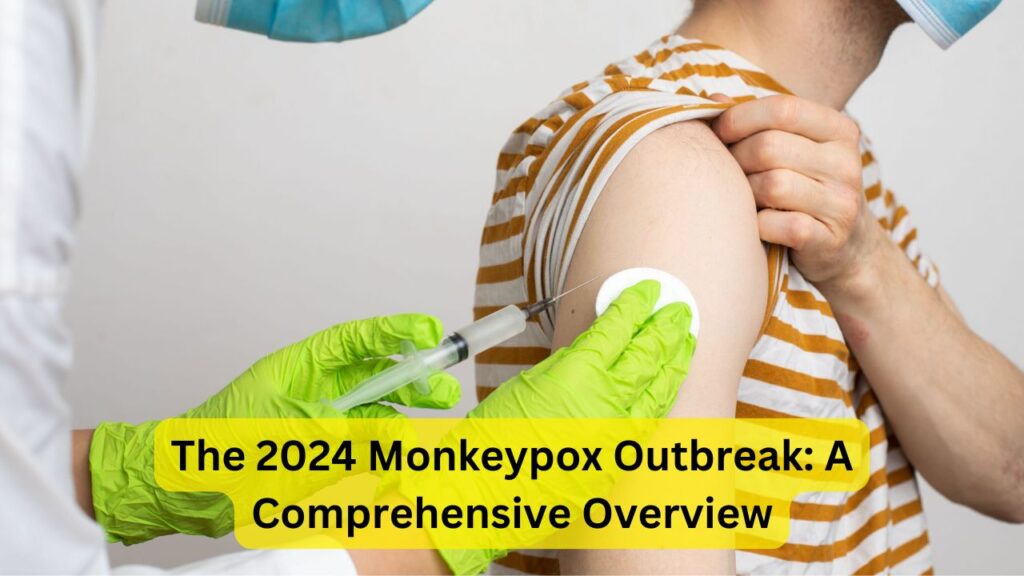
In 2024, the world faced another health crisis: the resurgence of monkeypox, a viral disease that had previously been contained in sporadic outbreaks in Central and West Africa. This outbreak, however, spread more rapidly than anticipated, leading to global concern and prompting health authorities to take swift action. In this article, we will explore the origins of the outbreak, its symptoms, transmission, response efforts, and what this means for global health moving forward.
What is Monkeypox? Origins and Background
Monkeypox is a zoonotic virus, meaning it can be transmitted from animals to humans. It is caused by the monkeypox virus, which is part of the Orthopoxvirus genus, the same family that includes the variola virus responsible for smallpox. Although the symptoms of monkeypox are similar to smallpox, they are generally milder and the disease is less contagious.
The 2024 Outbreak: How It Started
The 2024 monkeypox outbreak began in early January in a remote village in Central Africa. Initial cases were linked to contact with infected animals, particularly rodents and primates, which are known reservoirs for the virus. However, what set this outbreak apart from previous ones was the rapid human-to-human transmission that followed. Within weeks, cases were reported in neighboring countries and eventually spread to other continents.
Transmission: How Monkeypox Spreads
Monkeypox primarily spreads through close contact with an infected person or animal. The virus can be transmitted through respiratory droplets, direct contact with bodily fluids, or through contaminated objects, such as bedding or clothing. In the 2024 outbreak, the virus also exhibited some unusual transmission patterns, including potential airborne transmission, which heightened concerns among health experts.
Symptoms and Diagnosis
The symptoms of monkeypox typically appear within 7-14 days after exposure. They include:
- Fever
- Headache
- Muscle aches
- Backache
- Swollen lymph nodes
- Chills
- Exhaustion
- Rash: The most distinctive symptom is a rash that starts on the face and spreads to other parts of the body. The rash goes through several stages, from macules to papules, vesicles, pustules, and finally scabs.
Diagnosis is usually confirmed through laboratory testing, where samples from skin lesions, respiratory secretions, or blood are analyzed to detect the virus.
Global Response to the Outbreak
As news of the outbreak spread, the World Health Organization (WHO) and various national health agencies quickly mobilized resources to contain the virus. Public health measures included:
- Travel Restrictions: Many countries imposed travel restrictions, particularly from affected regions, to prevent the spread of the virus.
- Quarantine Measures: Infected individuals and those in close contact with them were placed under strict quarantine to limit transmission.
- Vaccination Campaigns: The smallpox vaccine, which offers some protection against monkeypox, was rapidly distributed in affected areas. Additionally, new vaccines specifically targeting monkeypox were fast-tracked for development and deployment.
- Public Awareness Campaigns: Governments and health organizations launched extensive public awareness campaigns to educate people about the symptoms, transmission, and prevention of monkeypox.
Challenges in Containing the Outbreak
Despite the swift response, the 2024 outbreak presented several challenges:
- Vaccine Hesitancy: As with other public health crises, vaccine hesitancy was a significant hurdle. Misinformation and fear about the safety and efficacy of vaccines hindered vaccination efforts in some regions.
- Strain Mutations: The virus exhibited mutations that made it more contagious, complicating containment efforts. Scientists are still studying these mutations to understand their full impact.
- Resource Limitations: Many affected countries, particularly in Africa, faced challenges due to limited healthcare resources, which slowed down the response and allowed the virus to spread further.
The Economic and Social Impact
The 2024 monkeypox outbreak also had significant economic and social impacts. Travel restrictions and quarantine measures disrupted global supply chains, leading to shortages of essential goods and economic downturns in some regions. Additionally, the outbreak strained healthcare systems already dealing with the long-term effects of the COVID-19 pandemic.
Socially, the outbreak exacerbated inequalities, as marginalized communities were disproportionately affected. Access to vaccines and healthcare was often limited in these communities, leading to higher infection rates and mortality.
Moving Forward: Lessons Learned
The 2024 monkeypox outbreak serves as a stark reminder of the importance of global health preparedness. Key lessons include:
- Strengthening Surveillance: Improved surveillance systems are crucial for early detection and rapid response to outbreaks.
- Investing in Research: Continued investment in research is essential to develop more effective vaccines and treatments for emerging infectious diseases.
- Promoting Global Collaboration: The outbreak highlighted the need for stronger international collaboration to address global health threats.
Conclusion
The 2024 monkeypox outbreak, while challenging, provided valuable insights into the complexities of managing emerging infectious diseases. As the world moves forward, it is essential to apply the lessons learned from this outbreak to better prepare for future public health crises. By investing in healthcare infrastructure, promoting vaccine equity, and fostering international cooperation, we can mitigate the impact of future outbreaks and protect global health.
Keynotes
- The 2024 monkeypox outbreak started in Central Africa and rapidly spread to other regions.
- Monkeypox is transmitted through close contact with infected individuals or animals, with symptoms including fever, headache, and a distinctive rash.
- Global response efforts included travel restrictions, quarantine measures, vaccination campaigns, and public awareness initiatives.
- Challenges included vaccine hesitancy, virus mutations, and resource limitations in affected regions.
- The outbreak emphasized the need for stronger global health preparedness, research, and collaboration.
